The start was a simple use case presented at a trade fair many years ago – but it caused visible astonishment among the expert community in attendance: the aim was to quickly and simply create, respectively develop, a variant configuration with the direct transition to the quotation and order process.
A 3D ladder was configured live (with real-time CAD display) with automatic SAP-compliant pricing. The creation of a production order including material requirements planning, bill of materials (BOM) creation, plausibility and availability checks were triggered automatically by the system. A subsequent automatic transfer of the order to SAP ERP took place at the push of a button and was fed directly to machine control.
The production of the ladder on a scale of 1:20 was initiated automatically and a small production line started. What we demonstrated was a finished process from model creation and configuration to order transfer and automated machine control in concert with SAP ERP – and all this using the example of a very simple product whose characteristics can nevertheless be varied manifold in terms of length, material used, width of the rungs, spacing between them or the placement of the first rung. Industry 4.0 in 2003.
Back then, this tangible and clear use case was demonstrated at the SAE booth by using the SAE applications SAE Developer, the CPQ application SAE Sales including CAD and various SAE-designed Abap solutions. That the presentation resulted in many contracts and customer relationships with some well-known global companies was not planned, but an all the more pleasing result.
Today, companies of different sizes deploy SAE applications in over 50 countries worldwide, including global key players with sales figures well in the billions. Once founded as a management consultancy for logistics processes specializing in variant configuration and the efficient mapping of all internal company processes within the SAP standard, SAE operates as an owner-managed company with SAP certifications.
The SAE team has a wide range of SAP module expertise, CAD know-how from various providers and excellent software development experience, even in the latest technologies. For more than 15 years SAE has been developing its own software applications such as the above-mentioned SAE Developer and SAE Sales.
S/4 interfaces
The independent sales management system from the CPQ environment has integrated interfaces to ERP/ECC 6.0 and S/4. Many years of experience with SAP as well as the web capability of the software solutions enable SAE to successfully serve a wide range of different customers.
Neutral database
Let u stake a look at the SAE Developer: It enables outstanding sales data management based on SAP ERP or SD data, including complete SAP LO-VC objects with object dependencies. The SAE solution generates native data from the existing ERP data, i.e. a completely neutral database. All data objects necessary for quotation or order creation are created, prepared and transported using the SAE Developer.
Complex pricing data, perfectly formatted texts and the most sophisticated document customizing allow individual print services. SAP configuration data can then be comprehensively enriched, revised, verified and prepared for further sales processing. All desired sales data can also be built or modeled independently in the SAE Developer. On the flipside, the solution also supports the essential core of the value chain.
Customers will find an efficient variant management in a demand-driven and optimal manner, the use of a distinctive structuring platform for variants, the visualization and simulation of object dependencies and configurations with country- and distribution channel-specific versions, the enhancement of technical configurators to sales-optimized configurators, the use of an office work flow for quotation and order processing, the use of a central database and communication platform for subsidiaries and sales companies through to the use of a central control platform for the relevant CAD models.
Other highlights include: cross-instantiation between subordinate objects, BOM processing over several levels, editing and checking object dependencies with automatic code and syntax suggestions. The SAE Developer is used by large and medium-sized companies in mechanical and plant engineering. Due to the modular structure and the customizable functions, company-specific requirements and goals can be taken into account in a highly efficient and tailored manner as needed.
With the SAE Developer, functions and applications are available that go far beyond the standard of an ERP solution. For customers, the SAE solution is used in the sense of functionally-enhanced middleware for the preparation of the SAP configuration, sales options and sales prices (for both master list prices and sales prices of subsidiaries) for the CPQ process – and as a web solution. As an example, the solution can support the data transfer from SAP and the product database, the structure of country price lists, the country-specific product characteristics and the marketing-oriented enhancement of the sales configurations. The transfer of relevant CAD data for the sales configurations or other applications is realized via the SAE MX Developer.
A tight grip on the sales process
Now let us shift the focus on the SAE sales solution, which represents an offline and web sales application and effectively supports sales teams in all phases of the quotation and sales process with interfaces and functions designed in line with practical sales requirements.
A flexibly implementable quotation configuration, quotation pricing including the filing of quotation documents, sales-oriented CRM solution management, comprehensive text and document management, Outlook integration, 3D model creation and automated data transfer/ transfer to SAP systems are only a small part of the functions. SAE Sales can be used both as an online and offline system. A major advantage is that technically sophisticated products and their variations are presented in a clear and customer-oriented manner with SAE Sales.
As mentioned, the SAE solution has its own CRM module with a quotation-specific workflow. The sales process and thus the field service are supported in an ideal way. The Outlook integration as well as the upload and download functions at the push of a button to an SAP system are SAE standard functionality.
It is also possible to connect existing CRM systems (such as Salesforce or C4C). SAE Sales enables a highly efficient and error-free workflow in the quotation and sales process, further enhancing profitability. Processing times are reduced, processing is greatly simplified for all staff involved in the workflow and at the same time the cost of the sales process is reduced overall. Quotations created offline or on the web from the SAE Sales application are transferred one-to-one to SAP within the workflow process via the SAE SAP interface.
Interactive Motion Engine
With the Interactive Motion Engine, SAE sees itself as a pioneer in the global CPQ software market and sets new standards. For the first time, the SAE Interactive Motion Engine enables the display of variant products up to complex plant systems individually in 3D on the basis of Virtual Reality technologies and to “move” them interactively (by generating a computer-generated reality).
The result can be a high-quality offer with individual images and customer-specific prices within SAE Sales. It can also be used in other native applications. An essential component of a future-proof solution for the visualization of configuration on different platforms is the uniform data basis in the form of a digital core.
The SAE Interactive Motion engine generates this data foundation and data format accordingly. The final twist: Configurations from the leading ERP systems (SAP ERP or SAP S/4 Hana) can be combined with existing CAD data (which can be converted at the push of a button) to create added value.


















![configuration The future of CPQ software is in leveraging technologies like VR to drive sales and business success. [shutterstock: 421334317, Halfpoint]](https://e3zine.com/wp-content/uploads/2018/05/variant-configuration_shutterstock_421334317web.jpg)

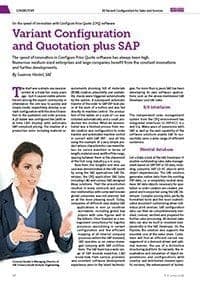
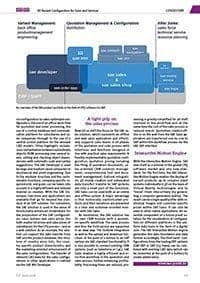
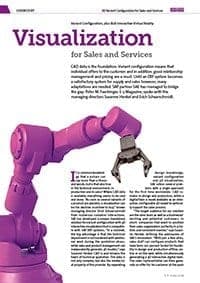
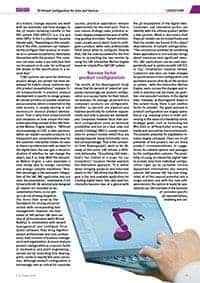
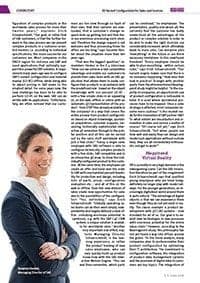
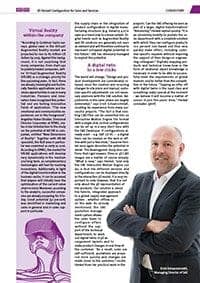
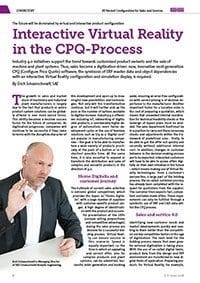
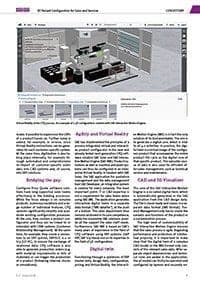
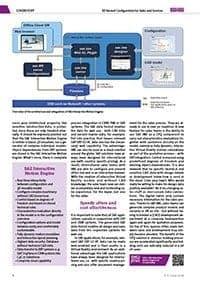
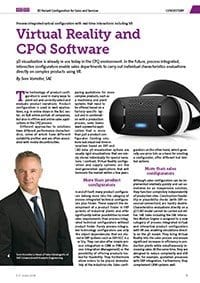



Add Comment